MARKET OVERVIEW
This sector has changed games in the recent years with new innovations changing the expectations of consumer, and what people believe constitues good nutrition in a culture. This would be a market diversification through beverage smoothies, fruit juices, and even fermented drinks as demand for functional, plant-based, and naturally flavored drinks continues to rise.
Sustainability is going to be a dominant factor in the future of the Global Fruit Beverages market. This will manifest not only through sourcing and packaging but also how companies position themselves in the marketplace. Consumers are going to opt for brands that are environmentally sensitive, such as using biodegradable or recyclable materials in packaging and source fruits from responsible farms.
Such demand for ecologically sensitive production will spur innovation in healthier and environmentally conscious beverages. As a result, the Global Fruit Beverages Market would remain in circulation where consumers opt for healthier drinks and alternatives to sugary sodas and artificial drinks.
On the other side of the technology spectrum, scientific innovation will guide the market as well. Progress in food science, especially preservative techniques, will allow a longer shelf life of fruit beverages without loss in flavor or nutrients. With the reduction of costs and streamlined manufacturing, these beverages will be made up for more consumers. At the same time, smart packaging solutions will allow additional transparency into nutritional content and assist in meeting growing consumer demands for traceability in their food and beverages.
As the market continues to expand, customization is likely to follow as well. Many more brands are going to be launching beverages designed to match individual dietary requirements or health aspirations. For example, consumers may enjoy beverages with minimal sugar, rich in fiber, or added essential vitamins and minerals. Consumers' ability to exercise greater control over their health is likely to spur deeper loyalty towards the brands.
Cultural influences will also determine the growth of the Global Fruit Beverages market in the years ahead. The more cultures of the world share their preference in taste and diet, diverse fruit-based beverage flavours and formulations will flood in. Exotic fruit combinations along with regional varieties will find more open audiences as adventurous consumers look forward to trying new tastes. This dynamic will widen the appeal of fruit beverages toward universal acceptance and enjoyment by different groups of people, especially millennials and Generation Z who are more concerned about both taste and health in the food and beverage that they consume.
The market will also benefit from the shift to natural and organic ingredients. Since consumers are learning more about how artificial additives and preservatives are bad for health, there is a growing desire for beverages produced with real fruit extracts. Brands that focus on authenticity will come out on top as consumers increase their demand for products that suit their values on transparency and clean eating.
The Global Fruit Beverages market will finally be characterized by a perfect balance of technology, sustainability, personalization, and innovation. The future of the market is expected to be shaped by companies that adapt and respond to consumer needs. It will, therefore, not just respond to the consumer demand but will also show a reflection of the collective shift toward healthier and more conscious living.
Global Fruit Beverages market is estimated to reach $59,754.02 Million by 2032; growing at a CAGR of 6.0% from 2025 to 2032.
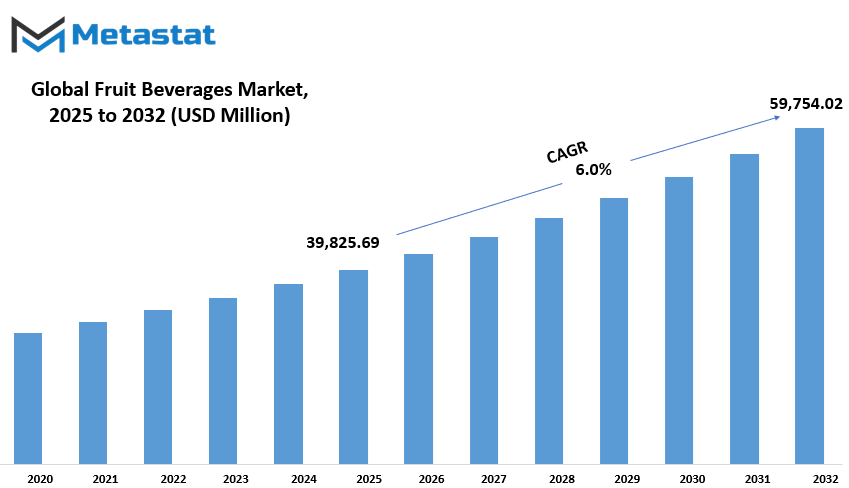
GROWTH FACTORS
The fruit beverages market is thus witnessing high growth due to the shift in consumer preference toward natural, healthy options. People are more conscious about lifestyle and health and thus clearly demanding the drinks made of natural ingredients and free from artificial additives. The trend is pushing the fruit beverages market forward since the consumers look for healthier alternatives to sweet drinks and sodas.
Another reason behind this surge of fruit beverages is because of increasing requirements for functional beverages. In such beverages, drinks provide additional properties besides thirst refreshment and consist of enhanced amounts of vitamins as well as other antioxidants. Many consumers nowadays drink to refresh as well as have something more nutritious that might maintain their body, mind, as well as wellness.
The presence of vitamins, minerals, and many other healthy contents in fruit drinks makes them so appealing to many who want a healthier lifestyle. This has opened the fruit drink market, mainly because it joins the global train of healthier consumption of food and beverages.
However, there are challenges in this promising trend that may limit the growth of the market further. The major constraint is the high production cost of fruit beverages. The reason is that fruits are available seasonally, and sourcing and producing the beverage can cost more depending on the time of year and availability of raw materials. This can impact the pricing of fruit beverages, making them less affordable for some consumers, which may limit the market's growth in certain regions.
There is also the issue of sugar content within fruit drinks. Consumers are becoming more aware and cautious about sugar intake, hence tend to seek less sugar-containing beverages. These factors urged governments to establish stricter rules on sugar content within the liquid food and beverage, which also pose a challenge to manufacturers.
On the positive side, the future of the fruit beverage market is bright with innovation on organic and low-sugar variants. Consumers are increasingly looking for products that fit their health-conscious needs. Organic fruit beverages, for example, contain natural, non-GMO ingredients. Low sugar variants are becoming more common too, as the manufacturers work hard to reduce the sugar content without compromising on the taste. These innovations hold exciting promise for growth in the coming years, as the market continues to adjust to shifting consumer preferences.
MARKET SEGMENTATION
By Product Type
The Global Fruit Beverages market is a big and diversified market that encompasses different types of products. Among these, juices take up a substantial share of the market. By 2025, the juice segment is projected to be worth $18,089.06 million. Juices are probably one of the most consumed drinks in the world, and most people have always included them in their diets since they have proved to be healthier and natural flavors. The ever-increasing demands for juices could be because they are nutritional beverages and because consumers prefer fresh, organic ingredients.
Besides juices, nectars, fruit drinks, and smoothies also add to the overall market, offering different alternatives for consumers who seek variety. Nectars are made by blending fruit pulp with water and sugar, giving them a thicker consistency compared to juices. Fruit drinks are a mix of fruit flavors but may add sugars, preservatives, and flavorings to their beverages, thus being less natural than juices and nectars.
Its appeal to consumers is due to preferring sweeter or more flavorful options at a cost-effective price. Because of their flexibility and the health-eating trend, smoothies are more in demand. This beverage is made from blending fruits, vegetables, yogurt, and other ingredients together so that various nutrients can be taken in easily through a deliciously convenient route. Consumers seek beverages that would remind them to have a healthy lifestyle and which also provide the vitamins and minerals the body needs.
These segments of the fruit beverages market are in steady growth since consumer preferences nowadays are towards healthier, more natural beverages. Innovations never stop to keep pace with ever-changing consumer requirements, evidenced by new flavors and product variations. More knowledge regarding the healthy benefits of fruit-based beverages coupled with awareness of wellness and fitness will bring further growth into this market. Within the coming years, the market is expected to continue growing as more individuals choose to drink fruit beverages as a healthy, tasty choice.
By Packaging Type
The global fruit beverage market is an enormous and diversified sector in which different packaging types have played a quite significant role in developing the market and then distributing it. The market is further segmented into four major categories on the basis of packaging type: bottles, cartons, pouches, and cans. Each packaging type has its respective benefits and significantly partakes in ascertaining what consumers around the globe prefer and demand.
Bottles are the most popular form of packaging for fruit beverages. Bottles are favored due to convenience and portability as well as to retain freshness. Bottles also come in a range of sizes: from single individual portions to large family-size units. Moreover, since plastic and glass bottles are transparent, it gives an easy view of the product inside which might help improve the overall presentation of the product. Finally, bottles are also recycle-friendly. With the growing concerns for the environment and a need for renewable packagings, this is one of the reasons bottles stand out in this line.
Carton is another avenue through which fruit beverages get sold. However, the carton mostly contains Tetra Pak cartons. Carton is applied to larger volumes of juices or fruit drinks. Moreover, the preservative-free extended shelf life of the product is a major benefit of cartons. This is because cartons offer an airtight seal that prevents light and air from affecting the quality of the beverage. Second, cartons are relatively light in weight and easy to store. They are, therefore, convenient for producers and consumers alike.
Pouches are also getting into the market. It is the most popular fruit drink or on-the-go products for children. It is light, flexible, and compact and easy to carry and stash away when not in use. In addition, it is more eco-friendly since it uses less material compared to bottles and cans that are the rigid packaging options. Although pouches are just relatively new in the market, convenience and portability have caught much preference.
The other most critical packaging options in the fruit beverages market are cans, typically made from aluminum or steel. Cans are also majorly used for fruit-based sodas and carbonated beverages. These can protect well externally by factors of light, oxygen, and moisture. Therefore, they tend to keep the product fresher for a more extended period. This aside, cans are easily piled and carried in the supply, thus becoming quite favorite to the manufacturers. The recyclable nature of cans also represents another reason why they are popular, since sustainability is an important factor today in the market.
The global fruit beverages market is, therefore, characterized by the options of packaging decided upon by the manufacturers. Bottles, cartons, pouches, and cans all provide their own specific advantages and rely mainly on the type of product, consumer preference, and environmental factors. This market will evolve further with the introduction of new technologies in packaging that are applied, and the sustainability and convenience factors drive innovation for new products.
By Distribution Channel
Indeed, worldwide in response to a demand of better alternatives away from old fashion sugars, market is growing up extremely fast of the fruit drinks. Demand of beverages based upon fruit has risen in a manifold for the thirst from consumers after good health from it. Consumers are demanding wider varieties of these fruit-based beverages with a focus on individual tastes and preferences. One of the significant factors behind this growth is the diversity in distribution channels through which these beverages are made available.
The fruit beverages market can be segmented based on the distribution channels, which include supermarkets and hypermarkets, convenience stores, online retail, and direct sales. Supermarkets and hypermarkets play a crucial role in the distribution of fruit beverages, as they offer a large variety of options in one place. Shoppers can easily find various brands and flavors of fruit beverages, making these stores a preferred choice for many consumers. Furthermore, the convenience of having all products under one roof appeals to busy individuals who want to quickly grab their preferred drinks while shopping for other groceries.
The distribution for fruit beverages through convenience stores also runs in big amounts, especially as these kinds of consumers would prefer convenience, with respect to speed and convenience. In turn, most such convenience stores have good access around them and hence provide ample options to easily approach, either across an office neighborhood, or other bustling neighborhoods of living quarters. This is because the smaller store format can handle transactions much faster than large supermarkets or hypermarkets, catering to the time-poor customers.
In the past two or three years, online retailing has increased manifold, and the most prominent reason is the increasing propensity to buy from home. With the assistance of the internet, the consumer can see a vast option of fruit beverages, compare prices, and get the purchases delivered right at their doorsteps. Such convenience, combined with the fact that one may not find such brands locally, has made it a popular option for many consumers.
Direct sales comprise another segment because it is often seen that in fruit beverages the product is often sold directly from manufacturers to a consumer. Under this method brands get a better contact with its customer, thus brands can ensure more personalized solutions with subscription models and other targeted solutions. Brands could thus forge long-term customer relationships and better meet the personalized demands of those customers, fuelling demand further.
In conclusion, it is a fact that the global fruit beverage market is influenced by several distribution channels, which address different consumer requirements. Fruit beverages are made available to various consumers through supermarkets, local convenience stores, online platforms, or direct sales.
By End-User
The global Fruit Beverages market has been segmented in terms of the end-users- retail consumers, food service providers, industrial users, and health and wellness. Each of them plays a highly important role within the overall development and demand that is seen on fruit-based beverages.
Retail consumers are perhaps one of the major groups in the market, owing to the demand for fruit-based beverages. These are the customers who purchase fruit drinks from stores, supermarkets, and shopping stores online. Their retail sales have increased with the advancement of the consumers' lifestyle due to increased demand for healthy natural refreshing beverages. Fruit beverages are the healthy alternative for the masses to abstain from sugar-sweetened sodas and artificial drinks. The reason behind this change in consumer preference is the increasing awareness of the advantages of using natural ingredients and demand for easily consumable, on-the-go beverages.
The other major target market of this industry includes food service providers like restaurants, cafes, and bars. Fruit beverages are sold by these service providers in their menu for healthy and delicious drinks. Increasingly, consumers when dining out want fresh, healthy drinks; this has placed demand on fruit beverages from food service providers. Fruit beverages are, therefore part of a health-conscious consumer acquisition strategy by food service businesses looking to differentiate themselves in the competitive arena.
The other significant market is industrial consumption. These are firms that use fruit juices as a component in many of their products, including processed foods, snacks, and candies. Industrial users need fruit-based drinks because they are natural flavors and have been linked to several health benefits. Demand from this industry is thus largely driven by the use of fruit juices and concentrates in the manufacture of other food and beverage products. These products usually attract health-conscious consumers who are looking for natural, preservative-free ingredients.
The fruit drink sector is likewise in demand for its health and wellness scope. This is the health-conscious individual, the athlete, and the person now being very careful in what diet they take. The rise in awareness on the health benefits of these fruit drinks such as high vitamin content and antioxidant properties drives this sector. Fruit drinks are merchandised as the most natural means of hydration, boosting immunity, and overall wellness. This has seen an increase in their consumption among people who are health-conscious.
Finally, the Fruit Beverages market, globally, has diversity as varied segments push up demand differently. Retail consumers, food service providers, industrial users, and health and wellness industries all help shape the market towards growth and further development. It is thus more likely that consumers will keep requiring fruit-based drinks as more persons seek healthy alternatives to sweetening beverages.
|
Forecast Period |
2025-2032 |
|
Market Size in 2025 |
$39,825.69 million |
|
Market Size by 2032 |
$59,754.02 Million |
|
Growth Rate from 2024 to 2031 |
6.0% |
|
Base Year |
2024 |
|
Regions Covered |
North America, Europe, Asia-Pacific, South America, Middle East & Africa |
REGIONAL ANALYSIS
Global fruit beverages market, divided geographically into five key regions, North America, Europe, Asia-Pacific, South America, and the Middle East & Africa, is divided into country-specific segments or regions in which the market operates uniquely.
In North America, the market is divided among the three countries: the United States, Canada, and Mexico. The U.S. holds a large portion of the market, where there is much high population with fruit-based drink consumption. Canada is the next in line with stable demand, while Mexico contributes to the growth of interest in fruit beverages, especially recently. This regional division mirrors the diversified preferences and consumption habits within those countries.
Another big market is Europe, comprising the UK, Germany, France, Italy, and other European nations. The UK and Germany have a significant market presence where consumers are increasingly looking for healthy, natural beverages. France and Italy are not too far behind in this trend, with increasing health consciousness and an appreciation for good-quality fruit drinks. Other nations in rest of Europe see the growing concern towards healthier alternative options for fizzy drinks and hence contribute positively to the consumption level.
Market growth in this segment is notably seen in Asia-Pacific. With demand increasing and flourishing in states such as India, China, Japan, and South Korea, it makes its place among some of the strong regions in growth. China is seeing a huge and growing market due to increased health awareness and a growing middle class. India, for instance is changing towards healthier beverages. Japan and South Korea are already stable and mature markets with a well-established cultural base that has long accepted the concept of wellness through beverages.
The fruit beverages market in South America is dominated by Brazil and Argentina. Brazil, with its large agricultural sector, produces a wide variety of fruit-based drinks catering to local and international markets. Argentina is not far behind, with growing interest in beverages that offer health benefits. The rest of South America also contributes to the market, though to a smaller extent compared to Brazil and Argentina.
Last is the diversity and high variance across the Middle East & Africa region, with very different market demand situations. The fruit beverages market in the GCC countries, such as Saudi Arabia, the UAE, and Qatar, has a high disposable income and an increasingly health-conscious population. Similarly, Egypt and South Africa have demand that is increasing as the consumers look for healthier alternatives to sweetened beverages.
The rest of the Middle East & Africa region plays a relatively smaller role but is growing steadily as more people embrace fruit-based beverages. Each of the regions presents unique market characteristics, but they all present a common trend of increasing demand for healthier, natural drink options.
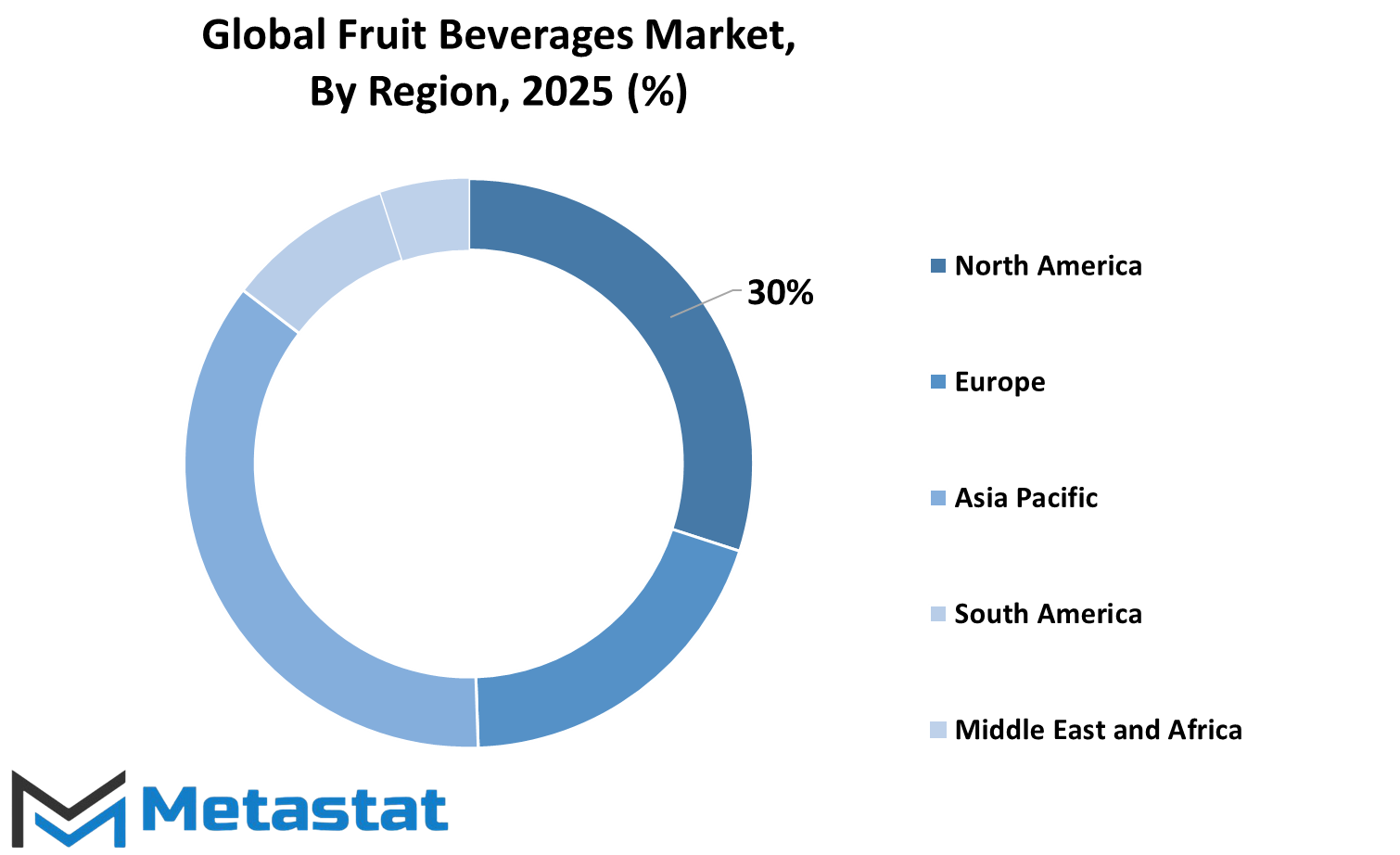
COMPETITIVE PLAYERS
The global market for fruit beverages is a fast-paced and highly competitive industry that has many top players leading through innovation, production, and share in the market. Some of the major firms in this segment include well-established brands like Tropicana Products, Inc., The Coca-Cola Company, and PepsiCo Inc. These have made tremendous improvements in creating beverage options that vary according to what consumers want. Tropicana, for example, is known for its refreshing fruit juices, while Coca-Cola and PepsiCo have diversified their product lines to include fruit-flavored beverages in addition to their flagship sodas.
Other major players in the market are The Campbell Soup Company and Del Monte Foods, Inc. These companies have decades of experience in food and beverage production, ensuring that their fruit-based drinks meet high standards of quality and taste. The major player is Ocean Spray Cranberries, Inc. It focuses considerably on cranberry juice and fruit beverages. As a brand, it has always stood for giving healthy products not only in flavor but also as nutritious, an attribute that keeps the health-conscious consumers coming in.
Langer Juice Company, Inc. and Parle Agro Private Limited are also leaders in the production of fruit beverages around the globe. The range of fruit juices offered by Langer is equally extensive, but Parle Agro emphasizes innovation in order to deliver the fruit drink product in the most convenient possible packaging. Dabur Ltd., Apple & Eve, LLC, and Ceres Fruit Juices Pty. Ltd. are simply more examples of companies that have forged a space in the market place and helped customers distinguish a fun and health-oriented solution from a good one.
Other companies like Ventura Coastal LLC, Pioneer Foods (Pty) Ltd, Rauch Fruchtsäfte GmbH & Co OG, and Eckes-Granini Group GmbH are also very crucial in the fruit beverage industry. Each of these companies has its unique combination of regional expertise and global reach that makes them stay relevant in the competitive market.
Prodalim B.V., The Archer-Daniels-Midland Company (ADM), and Döhler GmbH are among the key players which focus on the production and supply of fruit concentrate and other ingredients used in the making of fruit beverages. Manpasand Beverages Limited, Fresca Juices, and ITC B Natural are continuously contributing to the market through the product innovation and wide distribution networks. Fruit beverages, therefore become readily available among consumers all over the world.
In conclusion, the global fruit beverage market is full of diversified players who continuously innovate and adjust to consumer demand. These companies are very influential in the shaping of the industry, offering consumers an ever-increasing array of fruit beverage options.
Fruit Beverages Market Key Segments:
By Product Type
- Juices
- Nectars
- Fruit Drinks
- Smoothies
By Packaging Type
- Bottles
- Cartons
- Pouches
- Cans
By Distribution Channel
- Supermarkets/Hypermarkets
- Convenience Stores
- Online Retail
- Direct Sales
By End-User
- Retail Consumers
- Food Service Providers
- Industrial Users
- Health and Wellness Sector
Key Global Fruit Beverages Industry Players
- Tropicana Products, Inc.
- The Coca-Cola Company
- PepsiCo Inc.
- The Campbell Soup Company
- Del Monte Foods, Inc.
- Ocean Spray Cranberries, Inc.
- Langer Juice Company, Inc.
- Parle Agro Private Limited
- Dabur Ltd
- Apple & Eve, LLC
- Ceres Fruit Juices Pty Ltd.
- Ventura Coastal LLC
- Pioneer Foods (Pty) Ltd
- Rauch Fruchtsäfte GmbH & Co OG
- Eckes-Granini Group GmbH
WHAT REPORT PROVIDES
- Full in-depth analysis of the parent Industry
- Important changes in market and its dynamics
- Segmentation details of the market
- Former, on-going, and projected market analysis in terms of volume and value
- Assessment of niche industry developments
- Market share analysis
- Key strategies of major players
- Emerging segments and regional growth potential



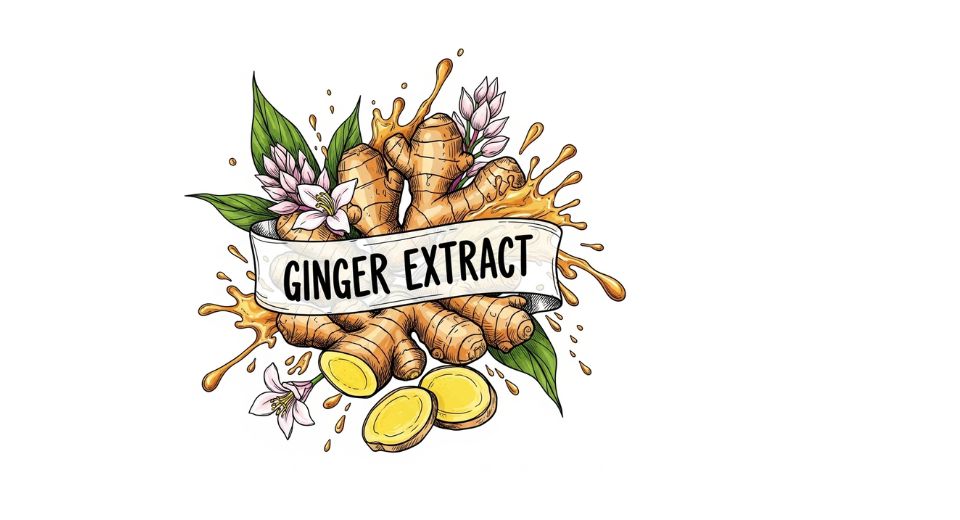

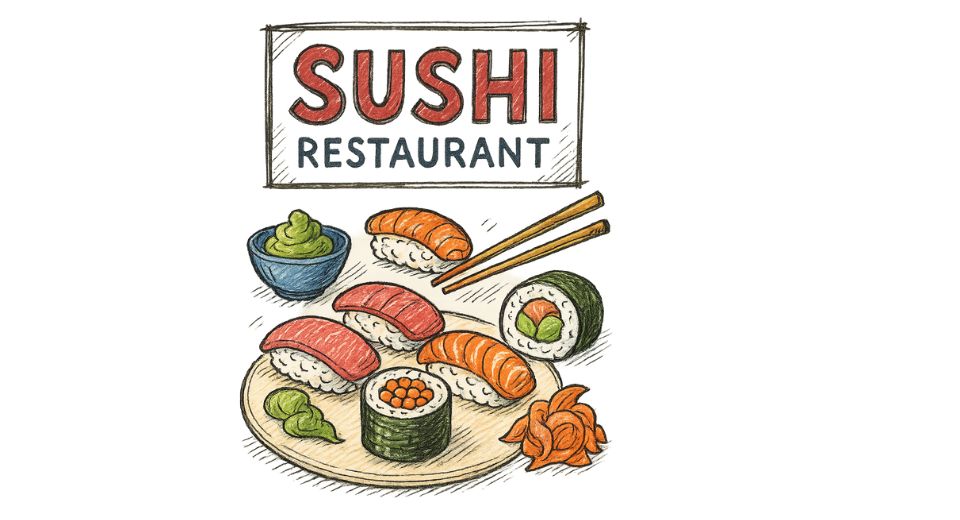
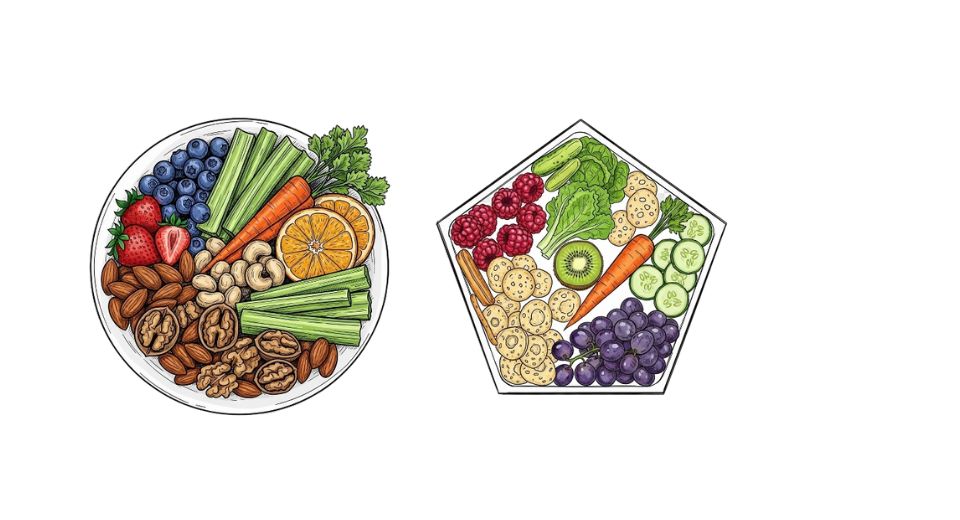

 US: +1 3023308252
US: +1 3023308252






